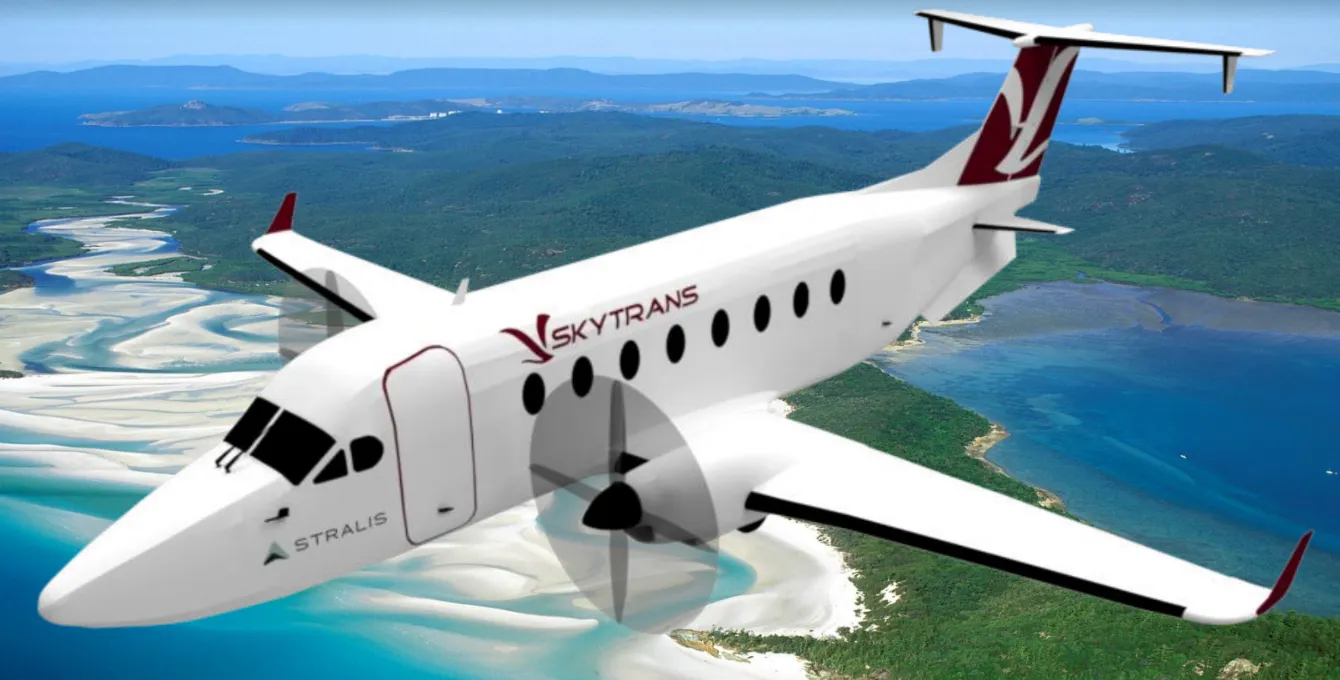
SKYTRANS COMMITS TO AUSTRALIA'S FIRST HYDROGEN-ELECTRIC AIRCRAFT
Jun 29, 2022

Skytrans has announced a groundbreaking commitment to develop Australia's first hydrogen-electric aircraft, marking a significant step towards sustainable aviation. This initiative aims to reduce carbon emissions and enhance environmental responsibility within the aviation industry. By leveraging cutting-edge hydrogen technology, Skytrans seeks to pioneer a new era of eco-friendly air travel, aligning with global efforts to combat climate change. The project is expected to stimulate innovation and create job opportunities while promoting cleaner energy solutions. Skytrans is dedicated to transforming the aviation landscape, ultimately providing a greener alternative for both passengers and cargo transportation in Australia.
Skytrans, a pioneering airline in Australia, has made a groundbreaking commitment to develop the country's first hydrogen-electric aircraft, signaling a significant shift towards sustainable aviation. This ambitious project not only positions Skytrans as a leader in environmentally friendly air travel but also aligns with global efforts to combat climate change. The initiative aims to reduce carbon emissions and lessen the environmental impact of aviation, making it a crucial step in the future of air transport.
Understanding Hydrogen-Electric Aircraft
Hydrogen-electric aircraft utilize hydrogen as a fuel source, which is converted into electricity through a fuel cell. This process produces only water vapor as a byproduct, making it an exceptionally clean alternative to traditional fossil fuels. Here’s a simple breakdown of how hydrogen-electric technology works:
| Step | Description |
|---|---|
| 1 | Hydrogen is stored in tanks on the aircraft. |
| 2 | Hydrogen is fed into a fuel cell, which generates electricity. |
| 3 | The electricity powers electric motors, propelling the aircraft. |
| 4 | Only water vapor is emitted as a byproduct. |
The Importance of Sustainable Aviation
The aviation industry is a significant contributor to greenhouse gas emissions, accounting for about 2-3% of global emissions. As the demand for air travel increases, so does the urgency for sustainable solutions. Skytrans’ commitment to hydrogen-electric aircraft is a response to this challenge, aiming to:
- Reduce Carbon Footprint: By transitioning to hydrogen-electric technology, Skytrans can significantly lower its carbon emissions.
- Enhance Energy Efficiency: Hydrogen fuel cells are more efficient than traditional combustion engines, translating to better fuel economy.
- Promote Clean Energy: The initiative supports the use of renewable energy sources for hydrogen production, further contributing to sustainability.
Innovations in Aircraft Design
Skytrans is collaborating with leading aerospace engineers and researchers to design a state-of-the-art hydrogen-electric aircraft. Key innovations include:
- Lightweight Materials: The aircraft will be constructed using advanced composite materials to reduce weight and improve efficiency.
- Optimized Aerodynamics: The design will focus on aerodynamic efficiency to enhance flight performance and reduce energy consumption.
- Modular Systems: Incorporating modular systems will allow for easier upgrades and maintenance, ensuring the aircraft remains at the forefront of technology.
Government Support and Industry Collaboration
The Australian government has expressed strong support for the development of hydrogen technologies, viewing it as a key component in the transition to a low-emission economy. Skytrans’ initiative is likely to benefit from various government grants and partnerships aimed at fostering innovation in the aviation sector.
Moreover, collaboration with other industry players will be crucial. Skytrans is actively seeking partnerships with:
- Aerospace Manufacturers: To source the latest technology in fuel cells and electric propulsion systems.
- Research Institutions: For insights into hydrogen production and storage solutions.
- Environmental Organizations: To ensure that sustainability remains at the forefront of the project.
Challenges Ahead
While the prospects of hydrogen-electric aircraft are promising, several challenges remain:
| Challenge | Description |
|---|---|
| Hydrogen Production | Scaling up renewable hydrogen production to meet aviation demands is essential. |
| Infrastructure Development | Establishing refueling stations and maintaining hydrogen supply chains will require significant investment. |
| Regulatory Approval | Meeting safety and regulatory standards for new aircraft technology can be a lengthy process. |
Future Prospects
Skytrans’ commitment to hydrogen-electric aircraft represents a transformative opportunity for the airline industry in Australia. By embracing this innovative technology, the airline aims to:
- Lead the Charge: Position itself as a frontrunner in sustainable aviation.
- Attract Eco-Conscious Travelers: Appeal to a growing demographic of travelers prioritizing sustainability.
- Set Industry Standards: Influence other airlines to adopt similar green technologies.
As Skytrans moves forward with this ambitious project, it paves the way for a cleaner, more sustainable future in aviation, contributing to a global movement towards decarbonization and environmental stewardship.
Conclusion
The commitment of Skytrans to Australia’s first hydrogen-electric aircraft is not just a major milestone for the airline but also a beacon of hope for the future of aviation. With continued innovation, collaboration, and support, the dream of sustainable air travel is becoming a reality.
Related Articles

Explore Thailand: The Best Islands to Visit for Paradise, Adventure, and Relaxation

The Ultimate Guide to the Best Islands in Thailand for Your Next Getaway

Do babies need passports? How to get a passport for a newborn

How to get a U.S. passport fast: here’s how to expedite the process

What is Mobile Passport Control: 5 reasons why you should use it

SENTRI vs. Global Entry: A detailed guide

Do you need a passport to go to the Bahamas? Let’s find out

Do you need a passport to go to Mexico? A detailed guide

Do you need a passport to go to Canada? We got the answer

Do You Need a Passport for a Cruise: An Essential Travel Guide

Booster Seat Requirements: All the Rules to Follow in Your Rental Car

What Are the World’s Most Powerful Passports, and How Does Yours Rank?

How to Take a Passport Photo at Home: A Helpful Guide

You've got to have heart! Southwest's new livery

Your opinion: Should water be free on low cost carriers?

Young women bolder than guys as solo travellers
